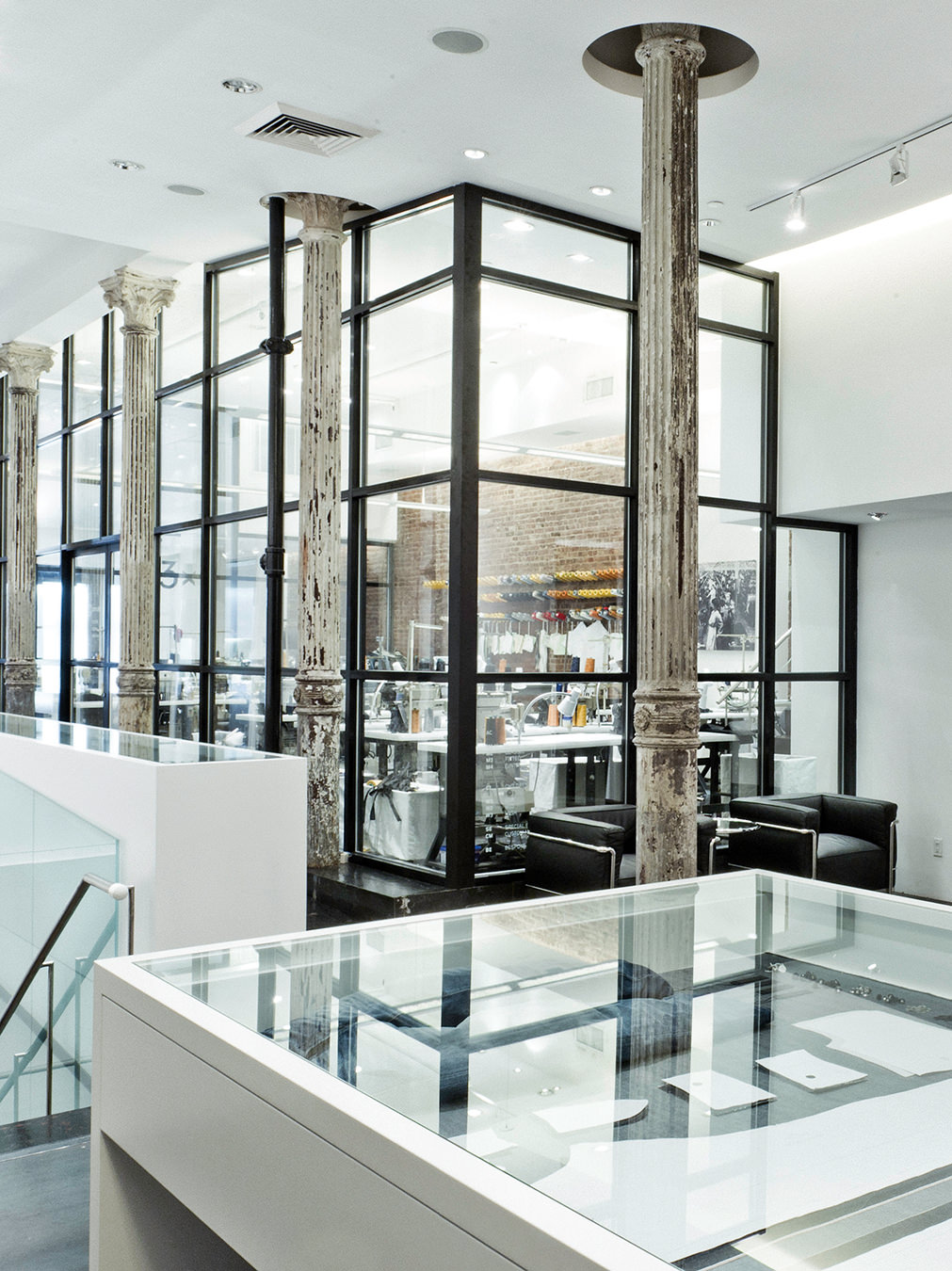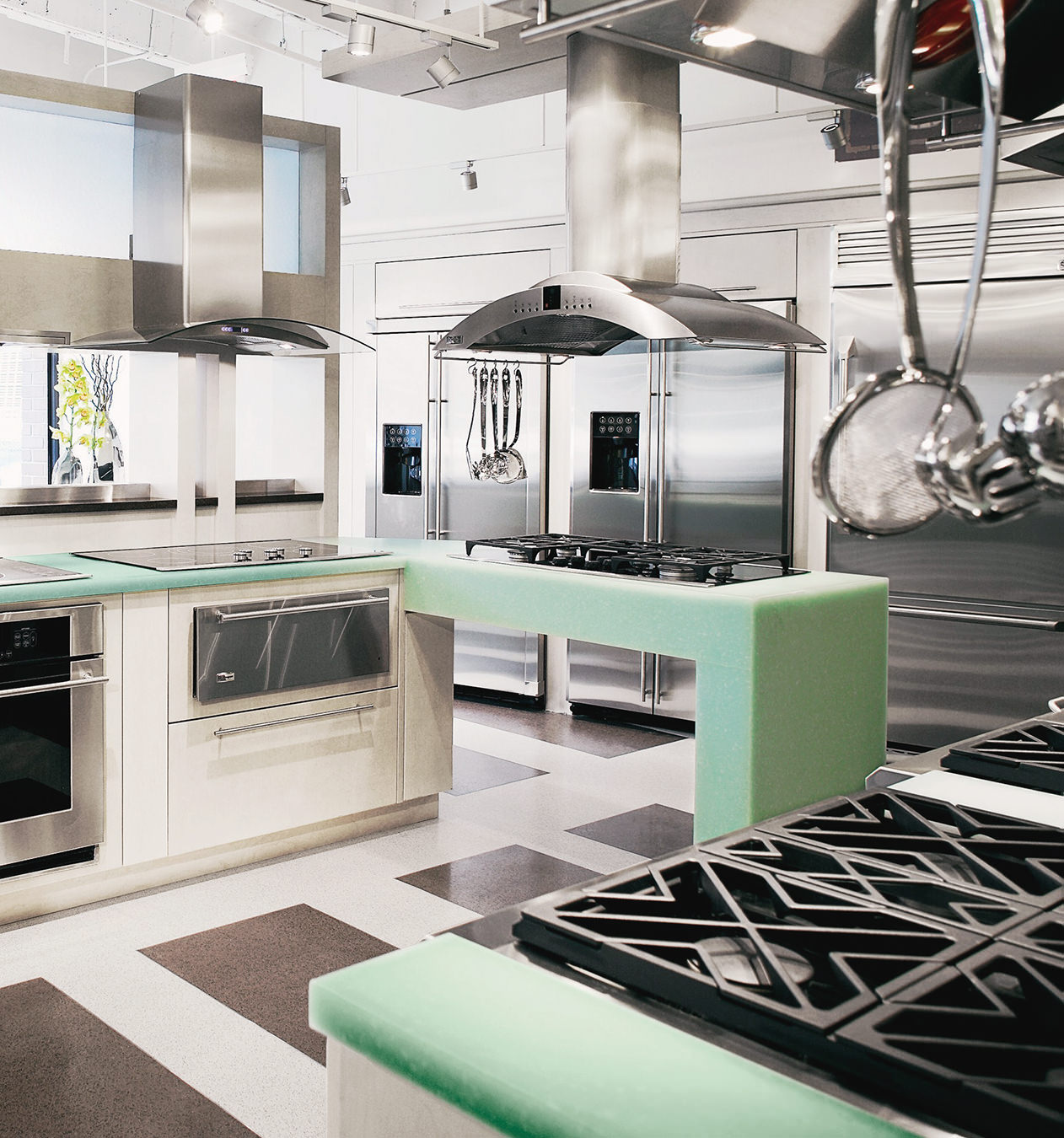Superhouse Sheds Light on the Often-Overshadowed American Art Furniture Tradition
The Odd Couple exhibition at the New York design gallery surveys work by 18 transgenerational talents who have straddled the line between art and furniture.
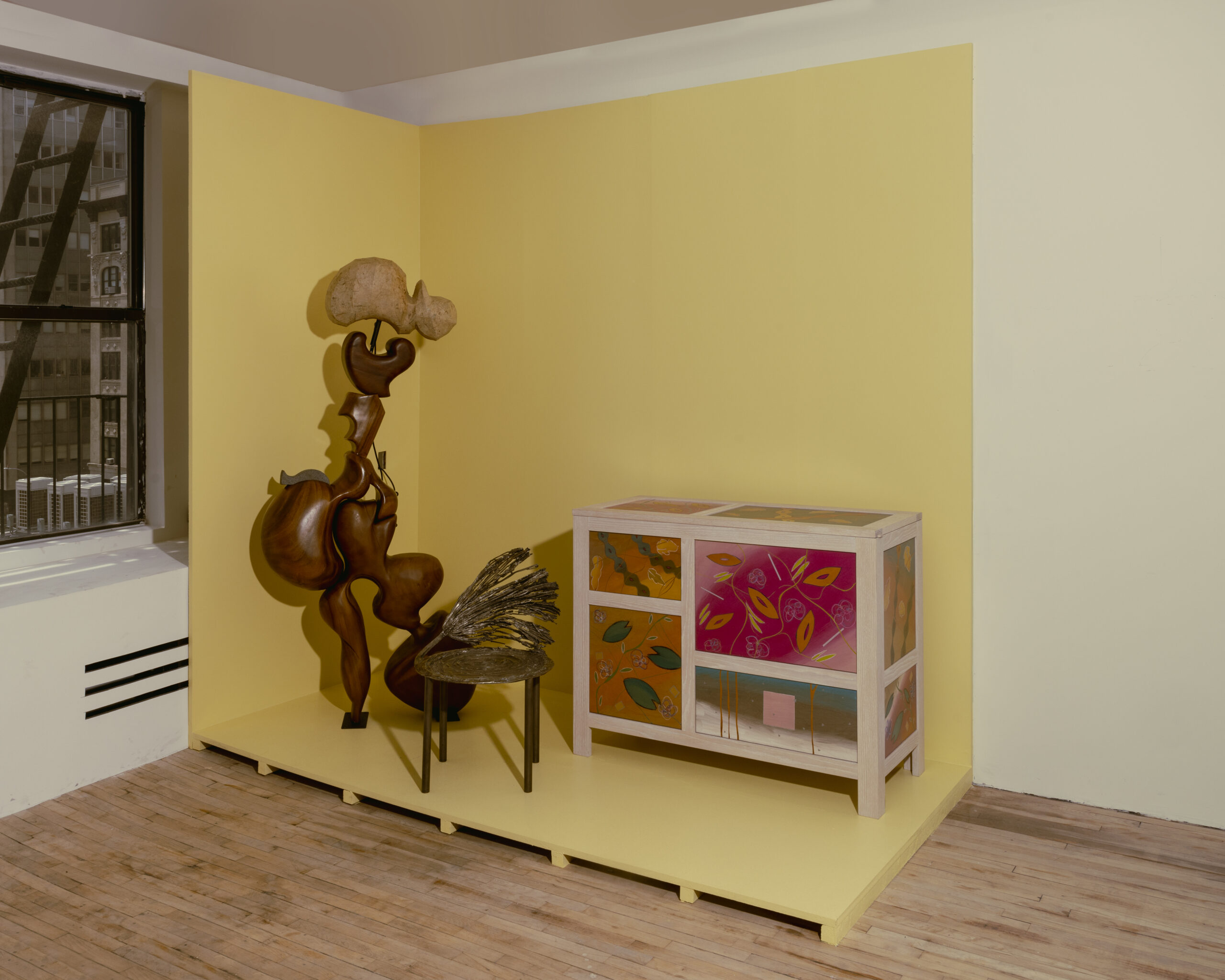
“Art. Furniture. Such apparently simple words—it’s amazing what happens when you put them together,” notes historian and curator Glenn Adamson in an essay contextualizing The Odd Couple survey exhibition at New York design gallery Superhouse through August 17. “People have been doing just that for a long time now, since at least the 1860s, when the phrase ‘artistic furniture’ first gained currency in England. And for at least as long, the conjunction has been causing controversy and consternation.”
Comprising selected and emblematic works by 18 talents transcending generations, the show considers how this tradition of disciplinary dissidence—challenging conventions imposed in the Renaissance era that separated art from design or what was then known as the decorative arts—influenced a period of fervent creative output in the United States during the 1980s and ’90s.
Though often overshadowed by the Italian radical design movement that prevailed before that and the advent of particularly ironic Dutch design that followed, emphatically postmodern American creatives like Gloria Kisch, Dan Friedman, and Wendy Maruyama were pushing the envelope in many ways and distinguishing the nebulous American art furniture movement from the more craft-focused studio furniture movement—think Wendell Castle and George Nakashima.
According to Adamson, Rick Kaufmann’s New York gallery, cheekily dubbed Art et Industrie, was a major arbiter of both schools. Superhouse prides itself on carrying on this platform’s legacy.

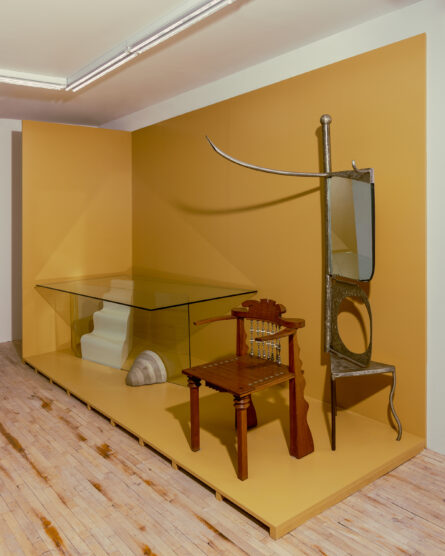
“Notably, [American art furniture] was a moment when the tactic of ‘appropriation,’ that is, the neo-Duchampian act of claiming just about anything and using it in an artwork, was widely practised,” Adamson says. “The perfect conditions, then, for the odd coupling between art and furniture to take centre stage.”
Playing on the often-reprised practice of creating “readymades”—everyday objects redefined as sculpture—talents like the polymathic Pippa Garner combine readily available and easily identifiable components as singular works. Her Lampoon piece splits a conventional turned-wood standing lamp and incorporates a metal chain and a hand crank, visually accentuating the act of turning on a light in a nuanced yet fully intentional mismatching of cultural associations. Such was postmodernism. The progressive process behind this work, taking from 1982 to 2021 to complete, hints at how Marcel Duchamp spent over 20 years carefully carving a hole in a doorway to frame a vignette scene, his seminal Étant donnés: 1° la chute d’eau, 2° le gaz d’éclairage piece.
Some of the other guiding principles, or antiprinciples, of the larger postmodern movement were also in play. Consider James Hong’s 1981 Tropic of Cancer dining table that incorporates reconstituted and exploded-scale conch shells as base elements that are perhaps more decorative than functional. By implementing these clearly identifiable elements, the designer riffed on its symbolic meaning and rendered an otherwise rationally functional furnishing into a sculpture. Skewing scale and playing on visual perception in a more formally pure fashion were artist/designers like Howard Meister. With the 1980 Nocturnal Chair, he extended the traditional proportions of dining chairs to the otherwise geometric, dark-toned form.
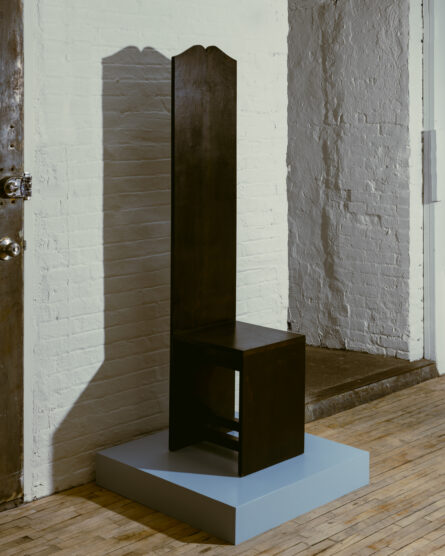
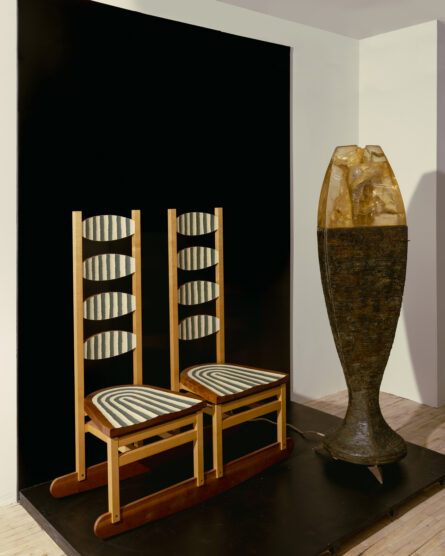
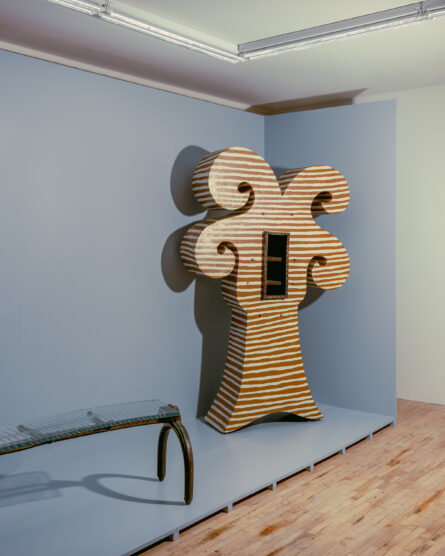
One-off pieces like the 1990 Gift of the King of Numbia cabinet by Richard Snyder deformalized the typical armoire, turning it into a slightly amorphous palm tree, revealing a collective intent to comment on the intended function of standard objects. Another method of provocative dissonance in American art furniture was the notion of challenging the conventional application of material and specific techniques for certain furniture typologies. Take Terence Main’s exhibited 1994 Pinnate bench, in which bronze and carved glass are brought together in a curvilinear bench. Both materials are traditionally used in smaller-scale objects.
Tilting the perception of what a specific material or production process is meant for—say, industrial-grade metals for cars used in a sofa frame or concrete made to look as soft as upholstery—became a cornerstone of the Dutch design movement as well. Marcel Wanders’s 1996 Knotted Chair renders a network of this ubiquitous textile connection, seemingly suspended in midair as a slingback chair, solid through the use of the innovative carbon fibre.
It’s an approach, amongst many, that remains fundamental for transdisciplinary artists and designers to this day. Sean Gerstley clad his 2022 Open Up armoire—also on view as part of The Odd Couple—in a puzzle-like arrangement of painted ceramic tile, a material more commonly associated with kitchens and bathrooms. With works like Kim Mupangilaï’s Bina Light Sculpture, also on view, it’s clear that implementing sculptural design or design-based art as cultural commentary has transcended the ironic skewing of visual symbolism (semiotics) and become far more self-reflective and socially reflexive. The show draws strategic parallels between historic and contemporary works in this respect.
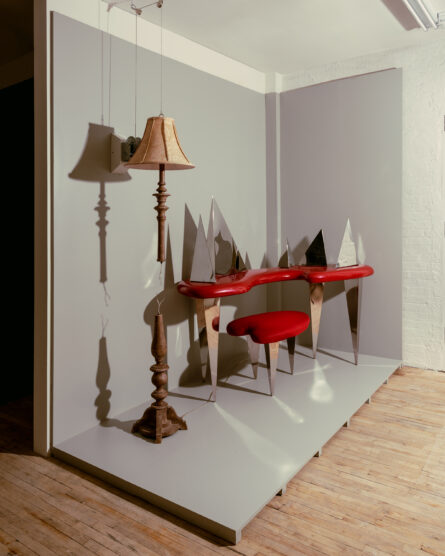

With many of the original art furniture talents continuing to practise in the following decades, the “tradition” continued even during the normcore days of the late 1990s and early 2000s. A byproduct of the 2008 financial crisis, when many recent graduates began to establish autonomous studios rather than be subsumed into faceless design teams at major companies, the advent of collectible design or, as Adamson calls it, the design vanguard, continues to establish itself and join the echelons of fine art. Disciplinary boundaries have blurred even more in recent years, with design galleries showing at art fairs and major museums mixing fine art and furniture in their permanent collection displays. Superhouse has been a fixture of New York art fair NADA for a few years now.
Working with furniture—or more broadly, object design—provides artists with the chance to make bold socio-political or cultural statements, and for designers, art is an avenue for less commercially or functionally constrained self-expression and experimentation.
Photography by Luis Corzo.


